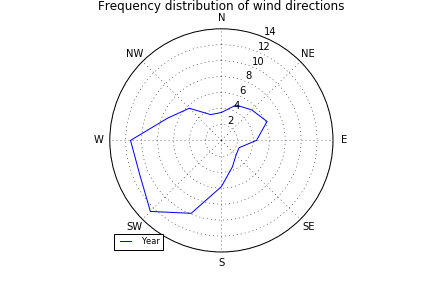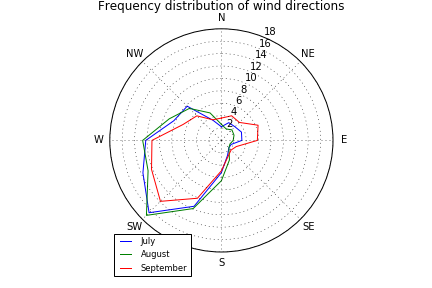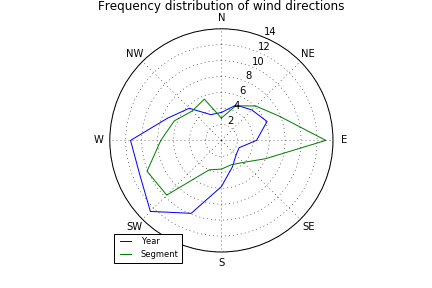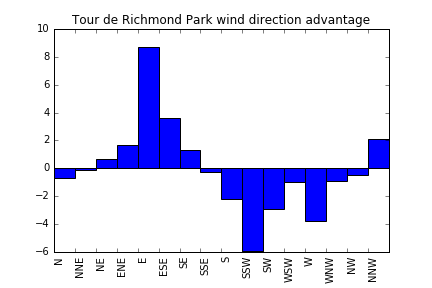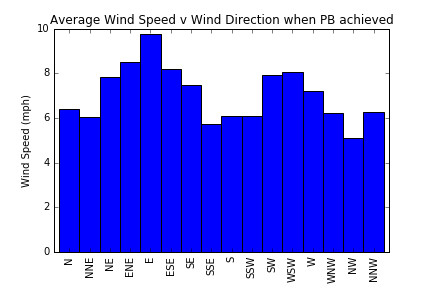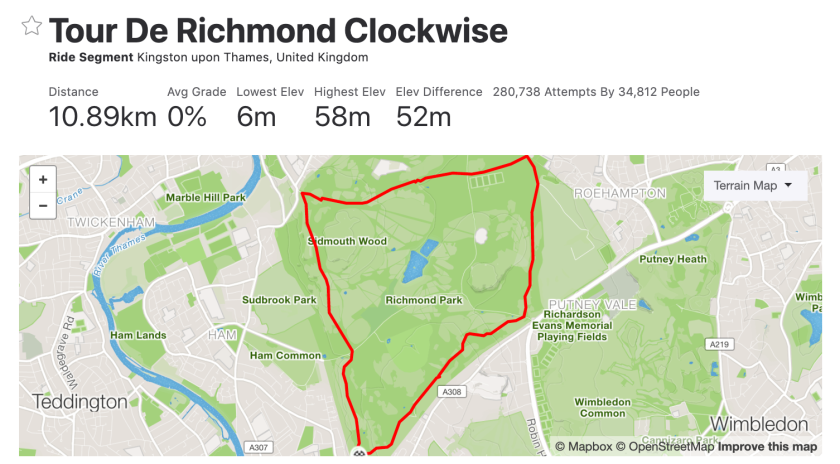
Following my recent update on the Tour de Richmond Park leaderboard, a friend asked about the ideal weather conditions for a reverse lap, clockwise around the park. This is a less popular direction, because it involves turning right at each mini-roundabout, including Cancellara corner, where the great Swiss rouleur crashed in the 2012 London Olympics, costing him a chance of a medal.
An earlier analysis suggested that apart from choosing a warm day and avoiding traffic, the optimal wind direction for a conventional anticlockwise lap was a moderate easterly, offering a tailwind up Sawyers Hill. It does not immediately follow that a westerly wind would be best for a clockwise lap, because trees, buildings and the profile of the course affect the extent to which the wind helps or hinders a rider.
Currently there are over 280,000 clockwise laps recorded by nearly 35,000 riders, compared with more than a million anticlockwise laps by almost 55,000 riders. As before, I downloaded the top 1,000 entries from the leaderboard and then looked up the wind conditions when each time was set on a clockwise lap.
In the previous analysis, I took account of the prevailing wind direction in London. If wind had no impact, we would expect the distribution of wind directions for leaderboard entries to match the average distribution of winds over the year. I defined the wind direction advantage to be the difference between these two distributions and checked if it was statistically significant. These are the results for the clockwise lap.
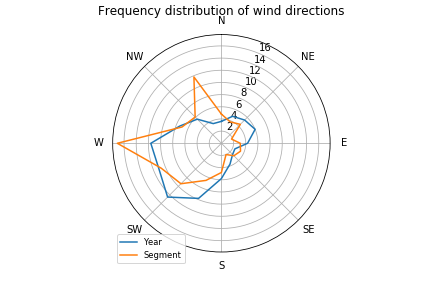
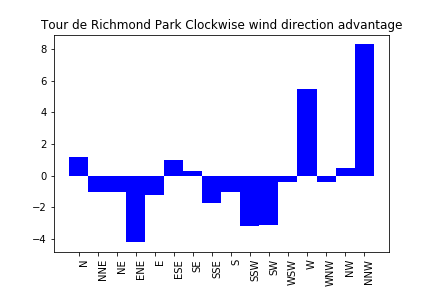
The wind direction advantage was significant (at p=1.3%). Two directions stand out. A westerly provides a tailwind on the more exposed section of the park between Richmond Gate and Roehampton, which seems to be a help, even though it is largely downhill. A wind blowing from the NNW would be beneficial between Roehampton and Robin Hood Gate, but apparently does not provide much hindrance on the drag from Kingston Gate up to Richmond, perhaps because this section of the park is more sheltered. The prevailing southwesterly wind was generally unfavourable to riders setting PBs on a clockwise lap.
The excellent mywindsock web site provides very good analysis for avid wind dopers. This confirms that the wind was blowing predominantly from the west for the top ten riders on the leaderboard, including the KOM, though the wind strength was generally light.
The interesting thing about this exercise is that it demonstrates a convergence between our online and our offline lives, as increasing volumes of data are uploaded from mobile sensors. A detailed analysis of each section of the million laps riders have recorded for Richmond Park could reveal many subtleties about how the wind flows across the terrain, depending on strength and direction. This could be extended across the country or globally, potentially identifying local areas where funnelling effects might make a wind turbine economically viable.
References
Jupyter notebook for calculations


